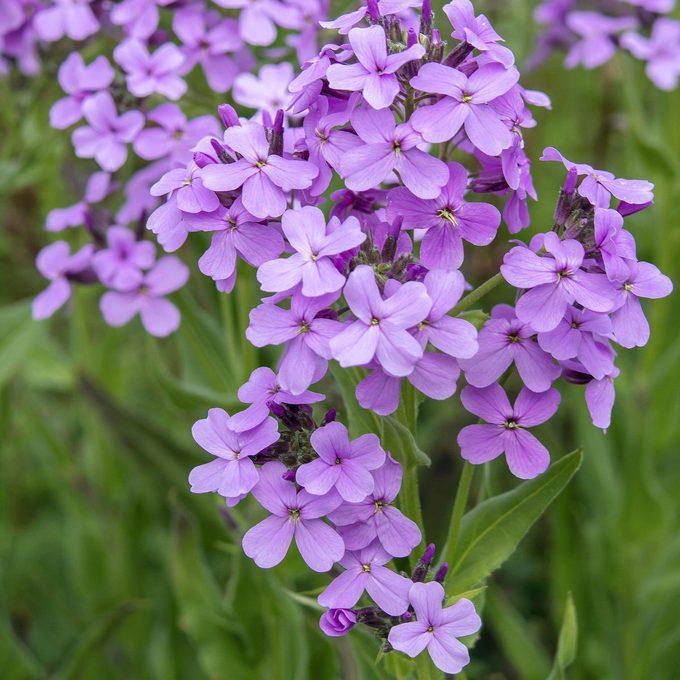Despite showy similarities, one of these plants is invasive. Learn how to tell the differences between dame's rocket vs phlox.
Dame’s Rocket Vs. Phlox: What’s the Difference?
On springtime or early summer walks through the woods, you might find yourself surrounded by purple flowers and think, “Wow, look at all that lovely phlox!” But do a double take, because you might be seeing a troublesome phlox look-alike. Unfortunately, the object of your admiration could be an invasive species: dame’s rocket.
While dame’s rocket and phlox flowers look incredibly similar, you can learn tips and tricks to tell them apart. By learning the difference, you can make sure that what you’re seeing really is phlox—and that you’re not letting an invasive flower take control of your yard. Here’s what you need to know about dame’s rocket vs phlox.
On This Page
Identifying Dame’s Rocket

- Botanic name: Hesperis matronalis
- Zones: 3 to 9
To identify dame’s rocket (Hesperis matronalis), look for four-petaled pink, purple or white clustered flowers. Its leaves grow in lance shapes, and orient themselves singly on alternating sides of the stem. Those leaves are smooth. Growing in Zones 3 to 9, it typically reaches heights of 3 to 4 feet tall.
Although dame’s rocket seeds can be found in some “native” wildflower mixes, it is an introduced plant that is considered invasive in several states. Gardeners should read the contents of seed mixes before purchasing to avoid buying those that contain dame’s rocket.
To control its spread, remove dame’s rocket before it seeds. This plant is a biennial that will have only foliage the first year, and then will flower and seed the second year.
Wildflower identification 101: here’s how to get started.
Identifying Phlox

- Botanic name: Phlox spp.
- Zones: 3 or 4 to 9, depending on variety
To identify phlox (Phlox spp.), look for tight bunches of five-petaled flowers that come in almost every color. Some varieties have hairy leaves, while others are smooth. Those lance-shaped leaves grow opposite each other in pairs on the stem. Phlox grows in Zone 3 or Zone 4 to 9, depending on the specific variety. Plant heights can vary, with a range of 6 inches up to 4 feet.
For gardeners who want to get the most out of their phlox, consider consistent deadheading to encourage more blooms.
Phlox vs Dame’s Rocket: Key Differences

While these flowers have many similarities, it’s possible to them apart from each other at a glance.
One key difference? The number of petals on the flowers. Dame’s rocket has four flower petals, while phlox has five. In addition, if your plant has hairy leaves, there’s a good chance it’s phlox—dame’s rocket leaves are smooth.
If you’re dealing with dame’s rocket, learn how to remove invasive plant species for good.






















